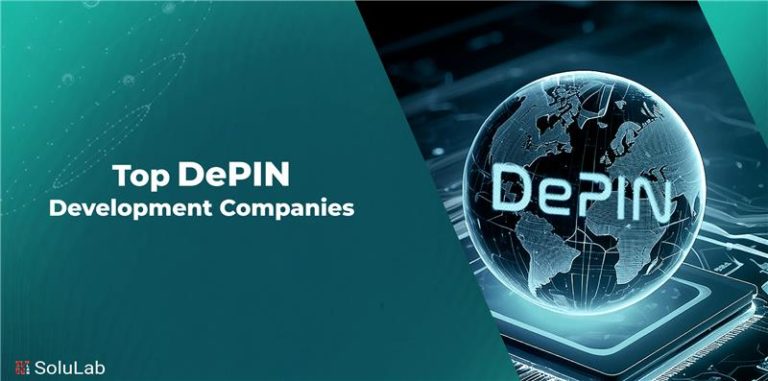
What is the most crucial piece of Web3 infrastructure apart from the network nodes? I would argue the block explorer.
For most users of Web3, the block explorer is the interface that allows them to see the blockchain they are using. Be that the transactions created when they send cryptocurrencies or NFTs, or to see what their smart contracts are doing once running in the wild. Without them, users feel blind as to what is really happening.
It’s not just Web3 power users that make use of them. Most Web3 wallets and centralised exchanges use them to display proof that transactions have taken place. Hence if you remove the block explorers from Web3, you’re leaving users in the dark as to what’s really going on.
There are parallels with search engines here in as much as block explorers index transactions on blockchains in a similar vein to how search engines index websites. Both are used as entry points by users to find the information they want. However, is the whole analogy of search engines and block explorers simply there because of the search engines place as the primary tool we use to locate our way around the web?
Is the block explorer in its current form too much of a Web2 paradigm?
Most blockchain networks have a leading block explorer for their platform. For instance, on Ethereum it’s Etherscan, on Solana it’s Solscan. With the success of the underlying blockchain platforms, these block explorer platforms have become critical infrastructure in their own right supporting these networks. Hence if they go down, many users of these blockchain networks are left in the dark. The underlying blockchain may be fine, but if the block explorer used by a user’s wallet is unavailable, as far as the users are concerned the whole network may as well be down, as they lose visibility of what’s going on all of a sudden.
This centralisation risk is why we need to get away from the model we have now, decentralised services need to become the norm for users who wish to query any data from blockchains.
Pure decentralisation in this context can mean fully decentralised API services such as what The Graph Protocol is trying to achieve. However, as we see with the growth of centralised exchanges, we’re likely to see centralised block explorer offerings continuing to prosper. This isn’t a bad thing as long as there’s an adequate choice and a level of standardisation among these services.
For instance, members of the Ethereum community standardised API endpoints for block explorers to easily link blocks, transactions and accounts ensuring that any applications sourcing this data can use multiple potential block explorer backends.
You can also read : What are Blockchain Layers?
Unlike the singular internet or web, there are multiple public blockchains. Each one requires its own infrastructure to support its users such as node software, developer libraries and of course block explorers.
Whilst public blockchain networks really heavily on cryptography techniques to function, much of the data contained within them is not encrypted. This facilitates data provenance allowing people to easily demonstrate cryptocurrencies, tokens or NFTs that they hold. It also means that the smart contracts deployed upon them are visible to everyone.
In this current phase of adoption, this means that block explorers can easily provide a great deal of information about the data contained within. This can include metrics such as the most valuable tokens, NFT sales and various other data. This is no different to interpreting data contained on a website — it’s there for anyone to consume.
However, as the technology matures, there are two trends that are going to force block explorers to evolve. The first of these is interoperability and bridging of assets between blockchains. These could be between disparate chains or layer 2 networks.
When you have an asset that moves between different blockchain networks, you need mechanisms to track this. This is where so-called multi-chain explorers become relevant. It’s going to be much harder to track an asset moving from one blockchain to another if there’s not a seamless experience where users can jump between views of blockchain transactions residing on different blockchains from one location. The last thing they’re going to want to have to do is to bring up two different blockchain explorers and compare hexadecimal strings.
There are examples of bridges being supported in block explorers, but no good solutions to the multi-chain view of the world exist currently.
The other trend that is likely to have a significant impact is the evolution of privacy technology. It’s unclear at the current time what the happy medium of the right amount of privacy on blockchains is. However, generally speaking, the more privacy, the better it is for the end-user and businesses who want to protect their IP.
You can also read : How is Blockchain Linked with the Real Estate Industry?
With privacy in place, the amount of information that can be conveyed by the current generation of block explorers drops significantly. Only those individuals involved with specific transactions will be able to make sense of them. I think of this as equivalent to having encrypted websites, where the only people who can view them are those who have been permissioned to do so cryptographically.
This isn’t a bad thing, but it will create some challenges for the current breed of block explorers. To address this perhaps more localised block explorer instances will become the norm that are permissioned for specific groups of companies or individuals. Or maybe the existing platforms will evolve to provide mechanisms for users to consume data via a token associated with keys they own.
The exact approach remains to be seen, but we’ll no doubt see solutions starting to emerge in the coming months. With this additional perspective, whilst the current breed of block explorers could be considered the search engines of Web3, this narrative may not be the aptest for the long term.
After all, unlike websites, the data contained within public blockchain networks is likely to become private over time, and there are going to be a lot of discrete networks that data will need to be aggregated across by users.
Hence whilst right now block explorers are the search engines of Web3, it’s likely that more of the data flowing through blockchain networks will start to look like encrypted data packets, as we see flowing around the web currently, and the utility of an explorer for this use case is somewhat limited.
Users of the web don’t pay attention to the individual packets of data flowing around the internet, and whilst the ability to see transaction identifiers on blockchains will remain relevant, as more and more abstractions are built on these public ledgers, explorers are likely to become diagnostic tools for the technically inclined folk who need to understand what’s actually happening under the hood.
Other than centralised services, the entry point for many users will be via their wallets. Locating the services most applicable to them is unlikely to be via a block explorer. There will likely be new types of directory services built to cater for these needs which still need to be built out for Web3.
Have any questions or comments? We’d love to hear from you! If you want to find out more about blockchain, its growth, and newest developments, then check our blog or listen to our enlightening Web3 Innovators podcast.
Credit : Medium




